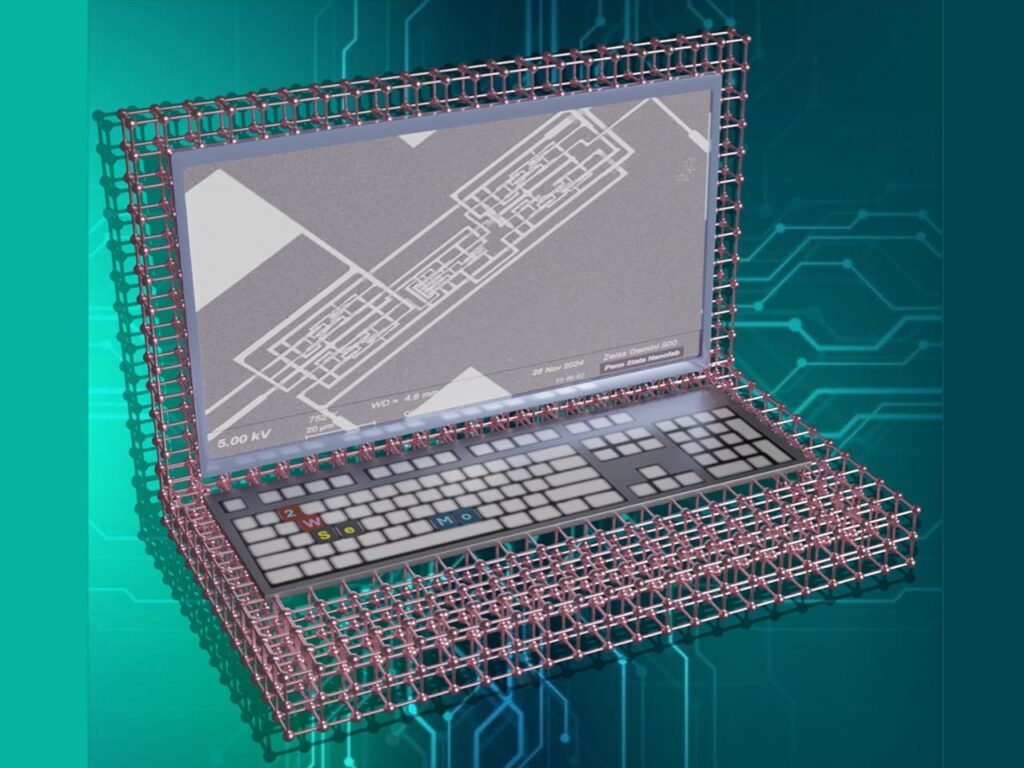
This conceptual illustration of a computer based on 2D molecules displays an actual scanning electron microscope image of the computer fabricated by a team by researchers at Penn State. The keyboard features highlighted keys labeled with the abbreviations for molybdenum disulfide and tungsten diselenide, representing the two 2D materials used to develop the transistors in the computer. (Credit: Krishnendu Mukhopadhyay/Penn State)
In a big breakthrough research that could redefine the future of electronics, an Indian-American scientist has led a team at Penn State University to create the world’s first fully functional computer built entirely from two-dimensional (2D) materials just one atom thick. This breakthrough promises to push the boundaries of computing beyond the limits of traditional silicon-based technology.
Saptarshi Das, Ackley Professor of Engineering and Engineering Science and Mechanics, spearheaded this pioneering research. The team fabricated a complementary metal-oxide semiconductor (CMOS) computer using molybdenum disulfide (MoS₂) and tungsten diselenide (WSe₂)—both atomically thin materials known as transition metal dichalcogenides (TMDs). Unlike silicon, which faces performance degradation as devices shrink, these 2D materials maintain exceptional electronic properties even at atomic thickness, enabling the construction of ultra-thin, energy-efficient devices.
The researchers successfully built over 2,000 transistors and integrated them into a “one instruction set computer” capable of performing basic logic operations at up to 25 kilohertz. While the operating frequency is modest compared to conventional silicon chips, this achievement marks the first time a fully functional computer has been fabricated using only 2D materials, demonstrating the feasibility of silicon-free computing.
This innovation opens exciting possibilities for flexible electronics, wearable devices, and energy-efficient computing systems. The ability to engineer circuits at the atomic scale could lead to thinner, faster, and more sustainable technologies, impacting everything from smartphones to sensors and beyond.
Professor Das’s leadership highlights the growing influence of Indian-origin scientists in cutting-edge global research, underscoring India’s role in shaping the future of technology and innovation.



